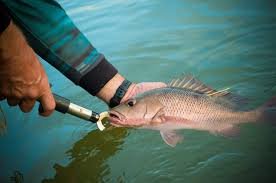Introduction
Tracking fish populations is crucial for ecological research, commercial fisheries, and conservation efforts. Two widely used fish tagging systems are Radio Frequency Identification (RFID) and acoustic tagging. While both offer unique benefits, their cost-effectiveness depends on various factors, including deployment costs, data accuracy, and long-term usability. In this article, we will explore the cost-effectiveness of RFID versus acoustic tagging systems for fish, backed by real-world data, industry research, and expert opinions.
Understanding RFID and Acoustic Tagging Systems
RFID Tagging System for Fish
Radio Frequency Identification (RFID) uses electromagnetic fields to transfer data between a tag and a reader. RFID tags can be passive, which means they don’t require an internal power source, or active, which include a battery for extended range and data transmission.
Advantages of RFID Tagging:
- Lower upfront costs for passive tags.
- High durability in freshwater environments.
- No reliance on external power sources (for passive tags).
- Precise, localized tracking in controlled environments.
Disadvantages of RFID Tagging:
- Limited detection range (typically a few meters).
- Requires close proximity between the tag and the reader.
- Less effective in deep-sea environments.
Acoustic Tagging System for Fish
Acoustic tags emit sound pulses detected by hydrophone receivers. These systems are commonly used in marine and large freshwater environments due to their ability to track fish over long distances.
Advantages of Acoustic Tagging:
- Longer range (up to several kilometers).
- Effective in deep-sea and open-water tracking.
- Real-time monitoring of fish movements.
- More reliable for behavioral studies.
Disadvantages of Acoustic Tagging:
- Higher initial costs due to the need for hydrophone receivers.
- Battery life limitations (active tags typically last 1–5 years).
- Interference from ambient noise in marine environments.
Cost Comparison: RFID vs. Acoustic Tagging Systems
1. Initial Investment Costs
- RFID tags: Passive RFID tags cost $0.50 to $5 per tag, while active RFID tags range from $15 to $100 per tag.
- Acoustic tags: Depending on the technology, acoustic tags cost between $200 and $500 per tag.
- RFID reader systems: Can cost between $1,000 and $10,000, depending on complexity.
- Acoustic hydrophone receivers: Range from $3,000 to $10,000 each, with most deployments requiring multiple units.
2. Operational Costs
- RFID systems require personnel to deploy and manage readers, but maintenance is minimal.
- Acoustic systems require regular battery replacements for active tags and periodic hydrophone calibration, increasing long-term costs.
3. Durability and Longevity
- RFID tags (passive) can last indefinitely as they lack a battery.
- Active RFID and acoustic tags have a lifespan of 1 to 5 years due to battery limitations.
- Acoustic receivers must be maintained, increasing operational costs.
4. Data Accuracy and Retrieval
- RFID is more accurate in environments where fish pass through predefined checkpoints (e.g., fish ladders, hatcheries).
- Acoustic tags provide broader tracking in open water but can suffer from interference.
Case Studies: Real-World Applications
RFID in Hatchery and River Studies
A study conducted by NOAA in Columbia River, USA, found that RFID was highly effective in monitoring salmon migration through fish ladders. Over 1 million tagged fish provided valuable survival data, with an accuracy rate exceeding 95%.
Acoustic Tagging in Marine Environments
In the Great Barrier Reef, researchers used acoustic tagging to track tiger sharks over a 500-kilometer range. Data collected over three years helped identify critical migration corridors, improving conservation strategies.
Which System is More Cost-Effective?
The answer depends on your objectives:
- For small-scale, freshwater studies, RFID is more cost-effective due to its lower tag and equipment costs.
- For large-scale, marine tracking, acoustic systems justify the higher cost by providing extensive movement data.
- For commercial fisheries, a hybrid approach may be optimal—using RFID for localized tracking and acoustic tags for migration studies.
Conclusion
The choice between RFID and acoustic tagging systems for fish depends on budget, tracking range requirements, and project goals. While RFID offers affordability and precision in controlled settings, acoustic tagging provides superior coverage for large-scale tracking. The future of fish tagging may lie in hybrid systems that combine RFID’s cost-effectiveness with acoustic tagging’s range capabilities.
Which tagging system aligns best with your needs? Let us know in the comments!






